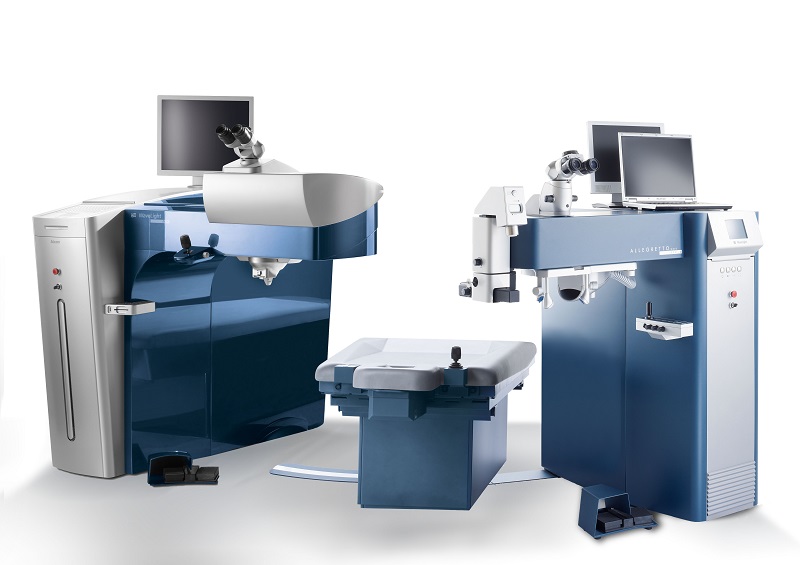
LASIK Surgery Guide: Pros, Cons & What to Expect
If you're tired of reaching for your glasses first thing in the morning or dealing with the daily routine of contact lenses, you've probably wondered about LASIK surgery. As one of the most popular vision correction procedures available today, LASIK has helped millions of people achieve clearer vision and greater freedom from corrective lenses. But is it the right choice for you?
Let's explore everything you need to know about LASIK to help you make the best decision for your vision and lifestyle.
What Is LASIK?
LASIK (Laser-Assisted In Situ Keratomileusis) is a type of refractive surgery that uses laser technology to reshape the cornea—the clear front part of your eye. This reshaping corrects how light enters your eye, allowing it to focus properly on the retina for clearer vision.
The procedure can effectively treat three common vision problems:
- Nearsightedness (myopia): Difficulty seeing distant objects clearly
- Farsightedness (hyperopia): Difficulty seeing close objects clearly
- Astigmatism: Blurred vision caused by an irregularly shaped cornea
The Benefits of LASIK
Freedom from Glasses and Contacts
The most obvious benefit is the potential to reduce or eliminate your dependence on corrective lenses. Many patients experience the joy of waking up with clear vision and participating in activities without worrying about glasses slipping or contacts drying out.
Quick Procedure and Recovery
LASIK surgery typically takes only minutes to complete. Most patients notice improved vision within hours, and many return to normal activities within 24–48 hours.
Long-lasting Results
For most patients, LASIK provides lasting vision correction. While individual results vary, many people enjoy clear vision for years after their procedure.
Advanced Technology
At St. Paul Eye Clinic, we use CONTOURA Vision LASIK, which measures over 22,000 unique elevation points on each eye to create a completely customized treatment plan. This advanced technology helps optimize visual outcomes.
High Satisfaction Rates
LASIK has one of the highest patient satisfaction rates among elective procedures, with studies showing approximately 95% of patients are satisfied with their results.
Things to Consider
Not Everyone Is a Candidate
LASIK isn't suitable for everyone. Ideal candidates should be:
- At least 18 years old (preferably over 21)
- Have stable vision for at least one year
- Have healthy corneas of adequate thickness
- Be in good overall health
Possible Side Effects
While complications are rare, some patients may experience:
- Dry eyes (the most common side effect)
- Temporary visual disturbances like glare or halos
- Under-correction or over-correction requiring additional treatment
- Night vision difficulties
Financial Investment
LASIK is typically not covered by insurance since it's considered an elective procedure. However, many patients find the long-term savings on glasses and contacts make it worthwhile.
Age-Related Changes
LASIK cannot prevent presbyopia—the age-related need for reading glasses that typically begins around age 40. Some patients may still need reading glasses for close work as they age.
The LASIK Process
Initial Consultation
Your journey begins with a comprehensive eye examination to determine if you're a good candidate for LASIK. During this visit, we'll:
- Evaluate your overall eye health
- Measure your refractive error
- Map the surface of your cornea
- Discuss your lifestyle and visual goals
- Review the risks and benefits specific to your situation
The Day of Surgery
LASIK is performed as an outpatient procedure in our comfortable surgical suite. Here's what happens:
- Preparation: Your eye is numbed with drops, and we place a gentle eyelid holder to prevent blinking
- Creating the Flap: Using advanced laser technology, we create a thin flap in the corneal surface
- Reshaping: The laser precisely reshapes the underlying corneal tissue according to your custom treatment plan
- Repositioning: The flap is carefully repositioned and begins healing immediately
The entire procedure typically takes less than 20 minutes for both eyes.
Recovery and Follow-up
- Your vision may be blurry immediately after surgery, but improvement begins within hours
- Most patients can return to work and normal activities the next day
- We'll provide protective eyewear and prescribe special eye drops to aid healing
- Follow-up appointments ensure proper healing and monitor your progress
Questions to Ask Your Eye Doctor
- Am I a good candidate for LASIK?
- What are my specific risks based on my eye health?
- What results can I realistically expect?
- Does the LASIK surgeon examine and test the patient before and after surgery to ensure the best results?
Why Choose St. Paul Eye Clinic?
- Experienced Surgeons: Our board-certified ophthalmologists have performed thousands of successful LASIK procedures
- Advanced Technology: We use the latest CONTOURA Vision LASIK system for optimal precision
- Comprehensive Care: From initial consultation through post-operative care, we're with you every step of the way
- Patient-Centered Approach: We take time to understand your unique needs and goals
Take the Next Step
If you're considering LASIK, the first step is scheduling a free comprehensive consultation. During this visit, we'll evaluate your candidacy, discuss your options, and answer all your questions. Remember, not everyone is a candidate for LASIK, but there may be other vision correction options available that can be discussed at the time of your consultation.
Our experienced team is here to help you make an informed decision about your eye care and potentially take the first step toward visual freedom.










